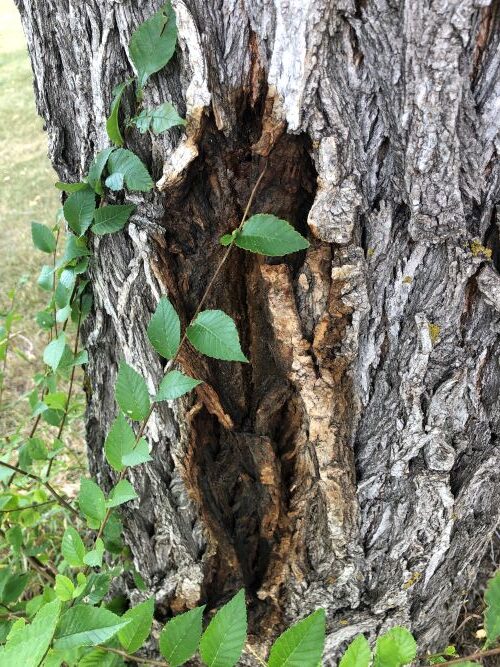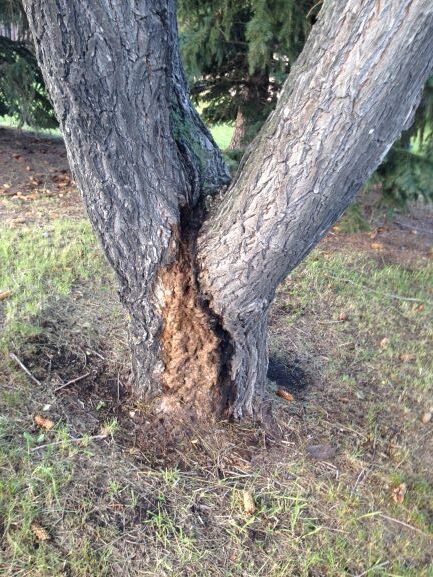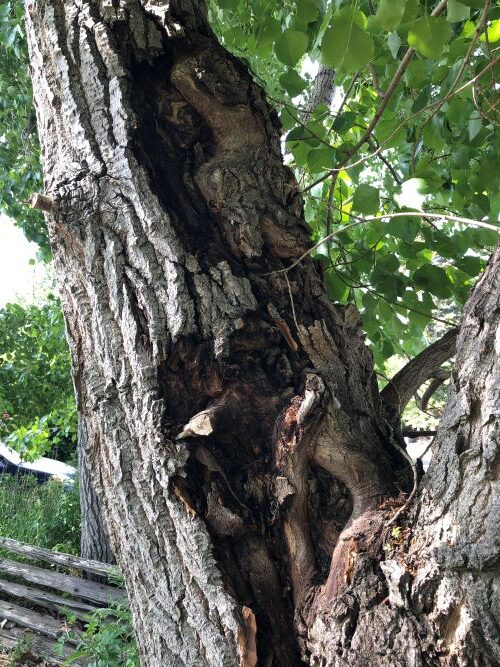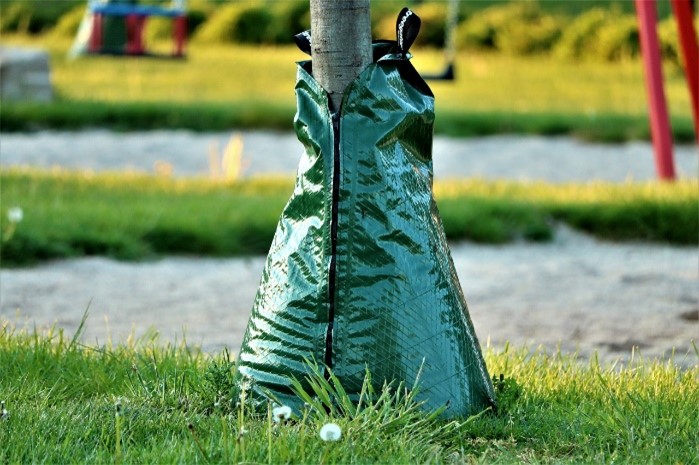Wetwood slime, also known as bacterial wetwood or slime flux, is a common condition affecting a variety of trees, including elms, poplars, willows, and oaks. This disease is characterized by the exudation of a foul-smelling, slimy liquid from cracks, wounds, or branch crotches in the tree. While wetwood is not usually fatal to trees, it can cause significant stress, weakening the overall health and aesthetic value of the trees.
Signs and Symptoms
It typically occurs in the inner sapwood and outer heartwood areas of the tree, often associated with wounds or environmental stress. The bacteria ferment the tree’s sap, producing gases and a foul-smelling, slimy liquid that oozes out from cracks or wounds in the bark. Certain tree species are more prone to wetwood than others. Some of the most frequently affected trees includes elms, hybrid poplars, cottonwoods, willows, oaks, and maples. Wetwood slime can be identified through several distinct characteristics:
- Oozing liquid – A slimy, dark, or foul-smelling liquid seeps from cracks or wounds in the tree. The fluid can be brown, yellow, or grayish in color and often leaves streaks down the trunk.
- Discoloration of bark – The areas surrounding the exudation site may appear discolored, often darkened or water-soaked. Bark is easily peeled off.
- Foul odor – One of the most noticeable signs of wetwood is a strong, sour smell emanating from the affected tree.
- Attraction of Insects – The fermenting liquid often attracts insects such as flies, ants, and beetles, which feed on the sugary exudate and can contribute to secondary infections.



Management and Control
Managing wetwood involves maintaining the overall health of the tree. This includes ensuring proper watering during dry periods, avoiding excessive pruning, and minimizing wounding to prevent further bacterial entry. Managing birch borer infestations requires a combination of preventive and remedial strategies.
- Since wetwood thrives in anaerobic (low oxygen) conditions, improving aeration and drainage around tree roots can help reduce the risk of infection. Avoid soil compaction around tree bases.
- Avoid excessive pruning or unnecessary cuts, as wounds provide entry points for bacteria.
- A healthy tree is more resistant to infections. Proper care includes adequate watering to avoid water stress by providing consistent irrigation, especially in dry seasons.
- Apply organic mulch( wood chips) around the base of the tree to maintain soil moisture and reduce stress.
- Avoid mechanical damages from lawnmower, weed whackers and vehicles
Wetwood is a common condition in many tree species and, while unsightly and unpleasant, it generally does not pose a significant threat to the tree’s health. By focusing on preventive care and maintaining tree health, the impact of wetwood can be minimized. Regular inspections and prompt attention to any signs of stress or damage can help ensure the long-term health and stability of affected trees.






